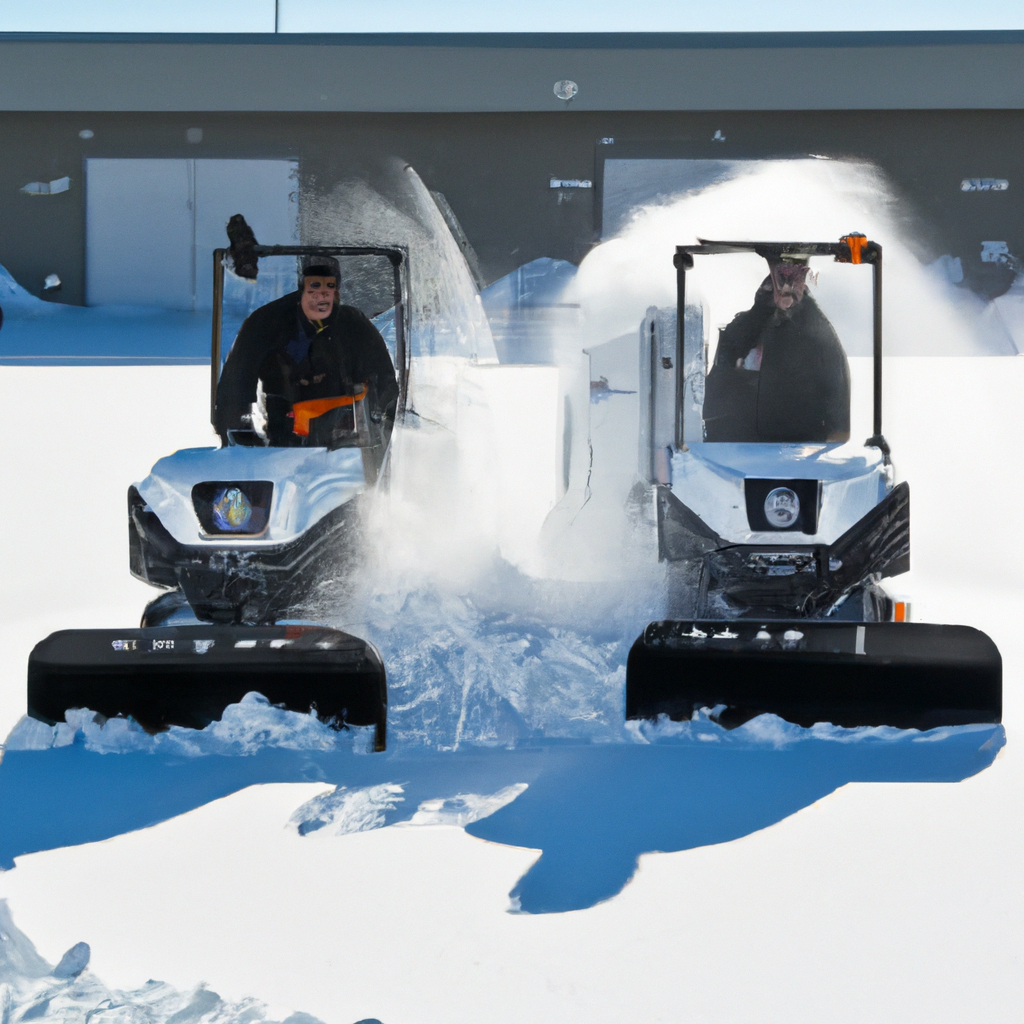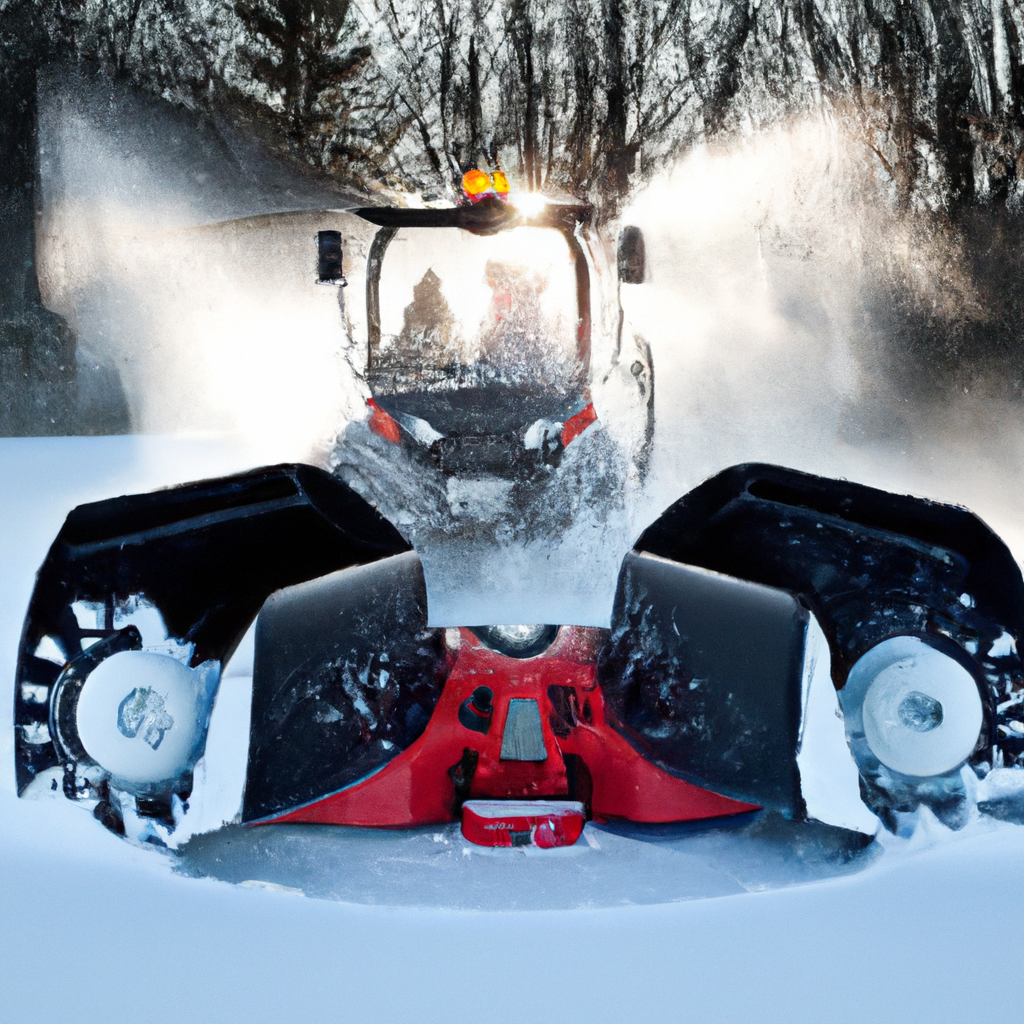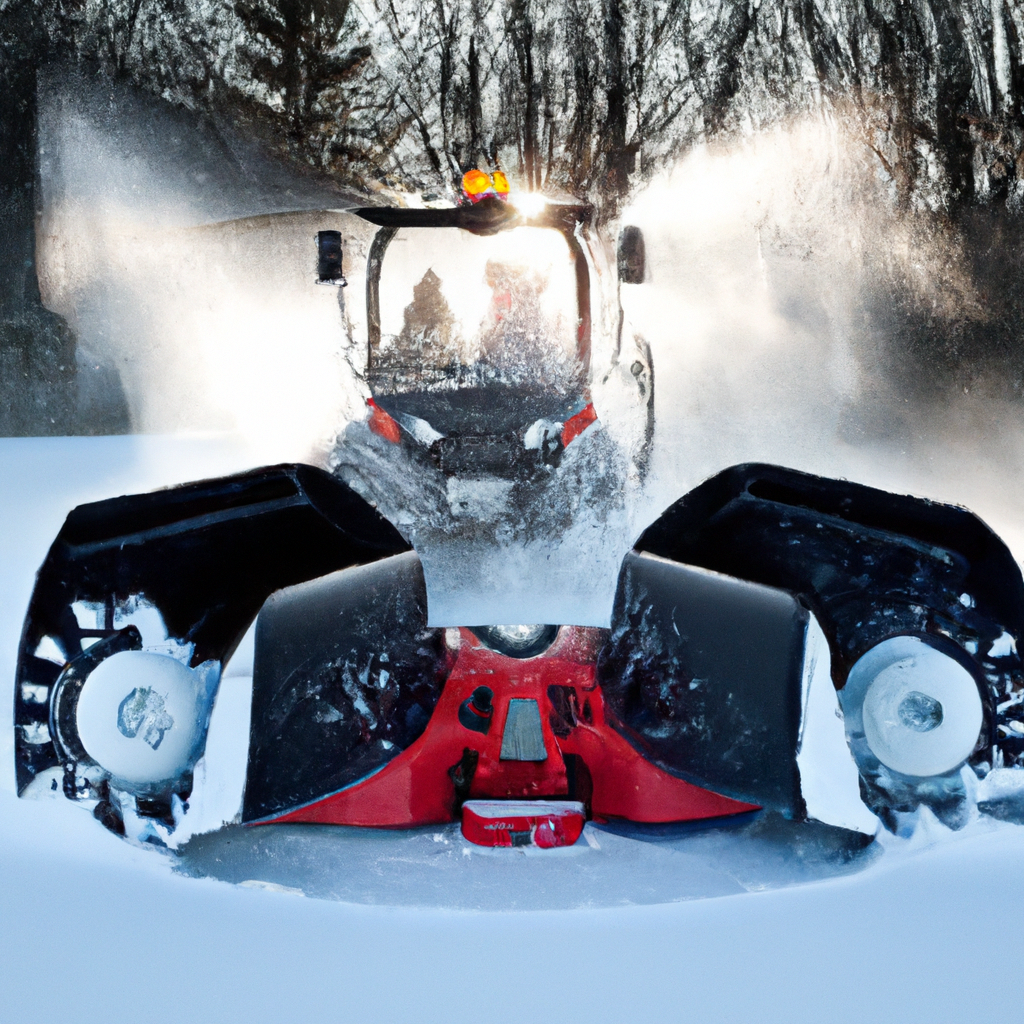We're an affiliate
We hope you love the products we recommend! Just so you know, we may collect a share of sales or other compensation from the links on this page. Thank you if you use our links, we really appreciate it!
Imagine waking up to a winter wonderland, a coating of fresh powdery snow covering your entire neighborhood. While the sight may be mesmerizing, the task of clearing your driveway and walkways can be daunting. That’s where snow blowers come to the rescue. But now you find yourself faced with a decision: should you invest in a 1 stage or a 2 stage snow blower? In this article, we’ll break down the battle of snow blowers and help you determine which one is the right choice for you.

1 Stage Snow Blowers
How do 1 stage snow blowers work?
1 stage snow blowers, also known as single-stage snow blowers, are compact and maneuverable machines designed to handle moderate snowfall. These snow blowers typically have a rubber or plastic auger, which rotates and scoops up the snow. The auger then propels the snow through a discharge chute, throwing it out of the way. Unlike 2 stage snow blowers, 1 stage snow blowers do not have an impeller to further propel the snow.
Advantages of 1 stage snow blowers
One of the key advantages of 1 stage snow blowers is their lightweight and compact design, making them easy to maneuver and store. They are ideal for clearing smaller areas such as driveways and sidewalks. Another advantage is their affordability, as 1 stage snow blowers are generally less expensive than their 2 stage counterparts. Additionally, they are typically easier to start and require less maintenance.
Limitations of 1 stage snow blowers
While 1 stage snow blowers are effective for light to moderate snowfall, they may struggle with heavy or wet snow. The lack of an impeller means that they might not throw the snow as far, resulting in a smaller clearance area and the need for multiple passes. These snow blowers also tend to have narrower clearing widths, which can prolong the time it takes to clear a larger area. Furthermore, their rubber or plastic augers may be more susceptible to damage when encountering rocks or other solid objects hidden beneath the snow.
2 Stage Snow Blowers
How do 2 stage snow blowers work?
2 stage snow blowers, also known as two-stage snow blowers, are designed to tackle heavier, deeper, and more compact snowfall. They consist of an auger, similar to that of a 1 stage snow blower, and an impeller. The auger collects the snow and feeds it into the impeller, which then throws the snow aside through a discharge chute. The impeller provides added force to propel the snow further, resulting in increased clearing capacity and distance.
Advantages of 2 stage snow blowers
The main advantage of 2 stage snow blowers is their ability to handle heavy, wet, or deep snow with ease. Thanks to the additional power from the impeller, these machines can clear larger areas more efficiently and effectively. They are also capable of throwing snow farther, which can be advantageous in situations where you need to clear a wide path. Additionally, 2 stage snow blowers are typically equipped with larger clearing widths, minimizing the time and effort required to clear large areas.
Limitations of 2 stage snow blowers
Due to their larger size and heavier construction, 2 stage snow blowers can be more challenging to maneuver, especially in tight spaces. They are also generally more expensive than 1 stage snow blowers, which may deter some buyers with budget constraints. Additionally, their larger size may pose storage challenges, particularly for those with limited space. Finally, 2 stage snow blowers require more maintenance, including regular oil changes and checking the condition of the augers and impeller.
Key Differences Between 1 Stage and 2 Stage Snow Blowers
Clearing capacity
One of the key differences between 1 stage and 2 stage snow blowers is their clearing capacity. While 1 stage snow blowers can handle lighter snowfall and smaller areas, 2 stage snow blowers excel at clearing heavier snow accumulations, deeper snowbanks, and larger areas. If you frequently experience heavy or compacted snowfall, or if you have a large property to clear, a 2 stage snow blower would be the more suitable choice.
Clearing efficiency
In terms of clearing efficiency, 2 stage snow blowers have the upper hand. Their auger and impeller combination allows for more efficient removal of snow, reducing the time and effort required to clear an area. The addition of the impeller also enables them to throw the snow farther, minimizing the chances of having to backtrack or manually remove piles of snow. If you value efficiency and want to complete your snow clearing tasks quickly, a 2 stage snow blower is the way to go.
Handling different types of snow
When it comes to handling different types of snow, 2 stage snow blowers have a clear advantage. Their robust design and powerful impeller make them capable of handling heavy, wet, or compacted snow with ease. On the other hand, 1 stage snow blowers may struggle with these types of snow, requiring more effort and potentially multiple passes to clear the same area. If you live in an area with variable snow conditions, a 2 stage snow blower will provide the versatility you need.
Suitability for large areas
If you have a large area to clear, such as a long driveway or a spacious commercial property, a 2 stage snow blower is the more suitable option. With their wider clearing widths and enhanced clearing capacity, these machines can cover more ground in less time. On the other hand, 1 stage snow blowers, with their narrower clearing widths, may be better suited for smaller areas or locations with limited maneuverability, such as narrow walkways or congested residential neighborhoods.
Price range
When it comes to price, 1 stage snow blowers are generally more affordable than 2 stage snow blowers. This price difference is due to the added features, power, and capabilities of 2 stage snow blowers. If you have a limited budget or anticipate using the snow blower for light to moderate snowfall only, a 1 stage snow blower could be a cost-effective choice. However, if you frequently experience heavy or deep snowfall and require a machine that can handle larger areas, investing in a 2 stage snow blower may be the wiser long-term choice.
Factors to Consider When Choosing Between 1 and 2 Stage Snow Blowers
Snowfall intensity and frequency
Consider the typical intensity and frequency of snowfall in your area. If you experience heavy or frequent snowfall, a 2 stage snow blower would be a better fit. However, if you live in an area with lighter or less frequent snowfall, a 1 stage snow blower may be sufficient for your needs.
Area size and terrain
Evaluate the size of the area you need to clear and the terrain you will be working on. For smaller areas or locations with tight spaces, such as narrow pathways or congested residential neighborhoods, a 1 stage snow blower’s maneuverability may be advantageous. However, if you have a large area, uneven terrain, or slopes to deal with, a 2 stage snow blower’s power and stability will be beneficial.
Budget
Consider your budget and the features you prioritize. If you have a limited budget or do not expect to encounter heavy snowfall, a 1 stage snow blower can provide adequate performance at a more affordable price. However, if you can afford the higher price tag and require the increased power and capabilities of a 2 stage snow blower, it may be a worthwhile investment in the long run.
Storage space
Assess the amount of storage space you have available. 2 stage snow blowers are typically larger and bulkier than 1 stage snow blowers, requiring more space for storage. If storage space is scarce, a 1 stage snow blower’s compact design may be more suitable.
Maintenance requirements
Consider the maintenance requirements of each type of snow blower. 2 stage snow blowers generally require more regular maintenance, such as oil changes and auger/impeller inspections, due to their larger size and additional components. On the other hand, 1 stage snow blowers are typically easier to maintain. If you prefer a machine with simpler maintenance needs, a 1 stage snow blower may be preferable.

Which Snow Blower is Right for You?
Considerations for homeowners
For homeowners, several factors should be considered when choosing between a 1 stage and 2 stage snow blower. If you have a small to medium-sized driveway and experience moderate snowfall, a 1 stage snow blower should suffice. Their affordability, maneuverability, and ease of use make them an attractive choice for many homeowners. However, if you have a larger driveway or live in an area with heavy or deep snowfall, investing in a 2 stage snow blower will ensure efficient and effective snow clearing.
Considerations for commercial users
Commercial users, such as property managers or businesses, have different requirements when it comes to snow clearing. In most cases, commercial users deal with larger areas and heavier snowfalls. This makes 2 stage snow blowers the more appropriate choice, as they offer the power, efficiency, and clearing capacity needed to tackle these demanding tasks. While they may come with a higher price tag, the investment in a 2 stage snow blower can provide commercial users with the performance and productivity required to maintain their properties.
Conclusion
When it comes to choosing between a 1 stage and 2 stage snow blower, it ultimately depends on your specific needs and circumstances. 1 stage snow blowers are ideal for homeowners with smaller areas to clear, lighter snowfall, and limited storage space. They offer affordability, maneuverability, and simplicity. On the other hand, 2 stage snow blowers are better suited for those dealing with heavier snowfall, larger areas, and versatile performance. They provide superior clearing capacity, efficiency, and the ability to handle different types of snow.
Consider factors such as snowfall intensity and frequency, area size and terrain, budget, storage space, and maintenance requirements before making your decision. By evaluating your needs and priorities, you can choose the snow blower that is right for you and ensure a winter season free of the burdens of snow and ice.

